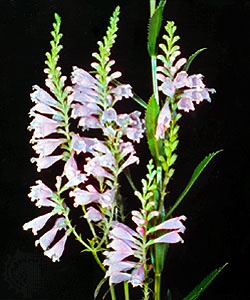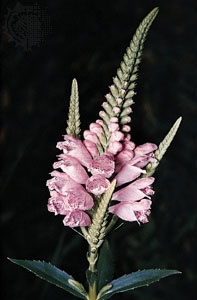dragonhead
plant
 either of two genera of plants, Dracocephalum (see photograph-->
either of two genera of plants, Dracocephalum (see photograph--> ) and Physostegia, both belonging to the mint family (Lamiaceae), order Lamiales. The about 45 species of Dracocephalum, all native in temperate Eurasia except for one in North America, have two-lipped flowers, lobed at the base and the upper lip, resembling fanciful heads of dragons. In North America D. parviflorum produces a dense spike of blue flowers at the top of its 60-cm- (2-foot-) high stem.
) and Physostegia, both belonging to the mint family (Lamiaceae), order Lamiales. The about 45 species of Dracocephalum, all native in temperate Eurasia except for one in North America, have two-lipped flowers, lobed at the base and the upper lip, resembling fanciful heads of dragons. In North America D. parviflorum produces a dense spike of blue flowers at the top of its 60-cm- (2-foot-) high stem. The related false dragonheads, or obedient plants (Physostegia; see photograph-->
The related false dragonheads, or obedient plants (Physostegia; see photograph--> ), with 12 species are native to North America. The best known is P. virginiana, which has large, pink, bell-like flowers on slender spikes.
), with 12 species are native to North America. The best known is P. virginiana, which has large, pink, bell-like flowers on slender spikes.- storksbill
- storm
- Storm Bay
- Storm of the Century
- Stormont
- storm petrel
- Storm, Theodor Woldsen
- Storni, Alfonsina
- Stornoway
- Storr, Paul
- Story, Joseph
- Story Musgrave
- Storyville
- Story, William Wetmore
- Stoss, Veit
- Stothard, Thomas
- Stotz, Carl E.
- Stoughton
- Stour, River
- stout
- Stout, George Frederick
- Stout, Rex
- Stout, Sir Robert
- stove
- Stowe